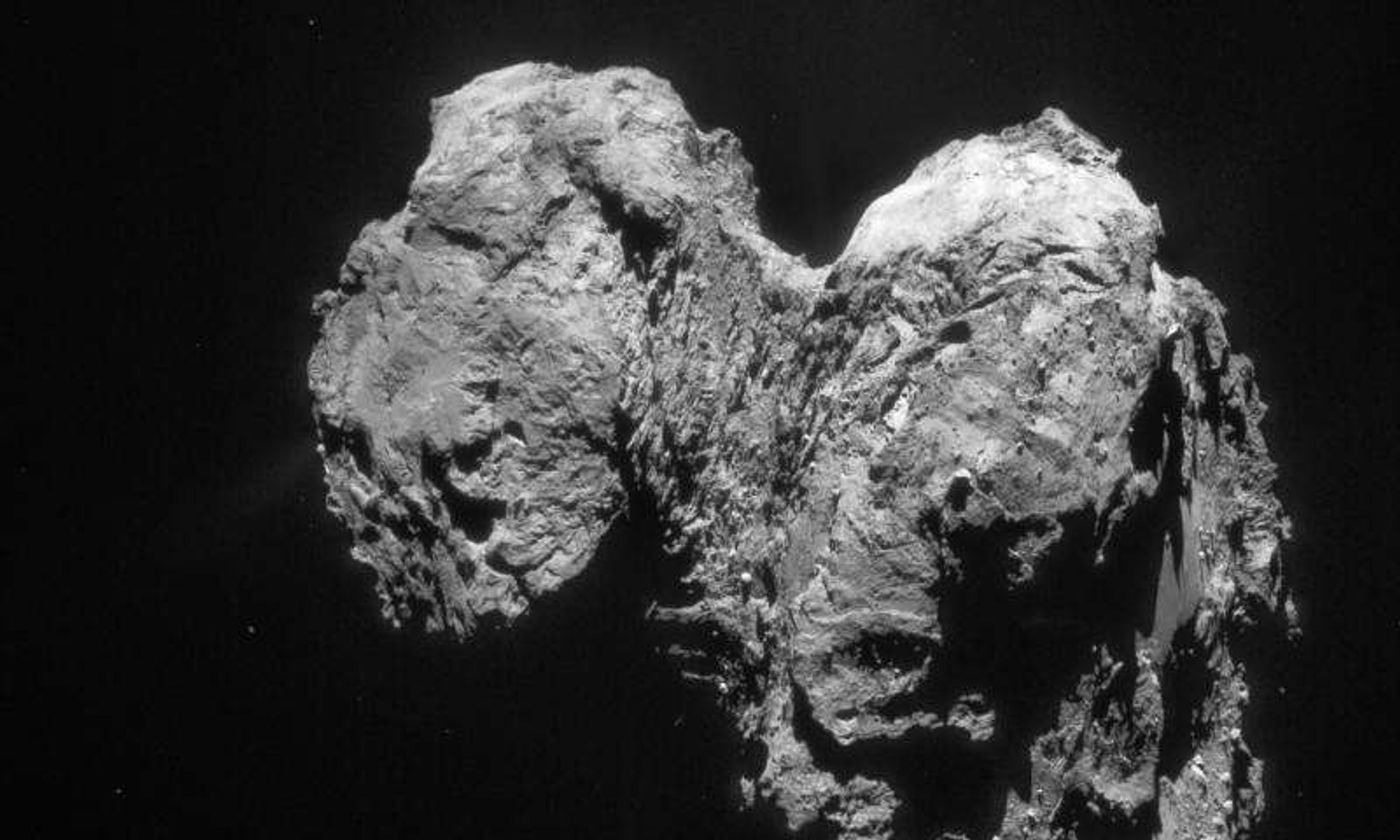Comet 67P is Probably a Lot Younger Than Originally Believed
If you’ve been following the European Space Agency’s (ESA) Rosetta/Philae mission on comet 67P (a.k.a. Churyumov-Gerasimenko), then you probably know all about how comet lander Philae didn’t make it and how Rosetta is still orbiting the comet as it moves further and further away from our Sun in its orbit.
Regardless of Philae’s inability to stay awake due to its poor landing conditions and lack of sunlight to power its electronics, the ESA has been using an orbiter known as Rosetta to make up for a lot of Philae’s shortcomings.

Image Credit: ESA/Rosetta/NAVCAM CC BY-SA IGO 3.0
67P has a strange double-lobed shape to it, and it’s believed that a light collision between two objects – not enough to shatter the rocks but just enough to merge them together – may have created this shape at some point in the comet’s history, perhaps about 4.5 billion years ago.
On the other hand, new research published in the journal Astronomy and Astrophysics by researchers from the University of Bern in Switzerland have concluded that the comet 67P, which was originally thought to be primordial because of the material makeup it has, may actually be a lot younger than originally thought.
How much younger exactly? Well perhaps 67P is only about 1 billion years old as opposed to 4.5 billion years.
"Chury's present shape is the result of the last major impact which probably occurred within the last billion years," said researcher Martin Jutzi.
There is primordial material on comet 67P, and this means that the material in question existed in the early universe. On the other hand, that doesn’t necessarily mean that comet 67P itself is primordial, and its shape certainly isn’t either.
Anyone who’s seen 67P’s shape would have a hard time believing it was primordial, simply because it has a major weak point. The double-loped design is connected by a thin bridge of material that could be easily snapped with even a minor collision, so for it to have survived so long without being destroyed is nearly unthinkable.
On the other hand, all that primordial material that 67P seems to have may have come from collisions of primordial space rocks prior to the day it became a double-lobed comet. That said, the double-lobed comet we know today would have to be quite young and it was probably the last mention-worthy collision the comet ever did see.
So far, it seems to be a solid hypothesis, but we will have to continue to study 67P to learn more about irs origins.
Source: University of Bern








